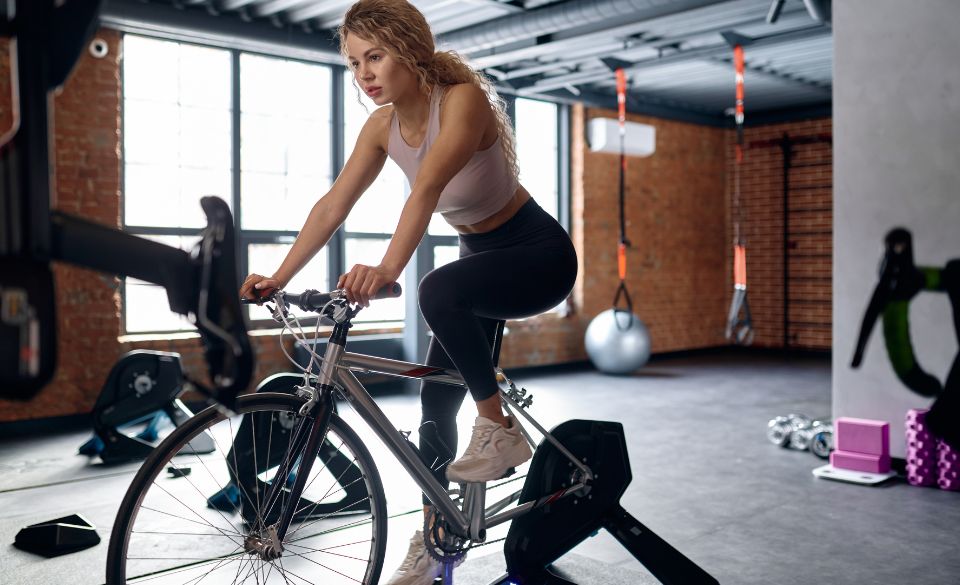
Cycling After C-Section: Navigating the Road to Recovery
Page Contents
- Healing from a C-Section: Give Yourself Time
- Pelvic Floor Health: The Foundation for Cycling
- Gradual Return to Cycling: Start Slow
- Listen to Your Body: Recognizing Signs of Overexertion
- Proper Bike Fit: Ensuring Comfort and Support
- Hydration and Nutrition: Fueling Your Body
- Supportive Gear: Postpartum Cycling Essentials
- Embrace the Journey: Celebrate Progress
Congratulations on becoming a new mom! Welcoming a baby into the world is a joyful and transformative experience, but it also comes with its share of challenges. If you’re an avid cyclist, you may be eager to get back on your bike and feel the wind in your face again. However, if you’ve had a C-section, it’s essential to approach postpartum cycling with care and patience. In this blog post, we’ll explore the journey of cycling after a C-section, the factors to consider, and tips to ensure a safe and enjoyable return to the saddle.
Healing from a C-Section: Give Yourself Time
A C-section is a major abdominal surgery, and your body needs time to heal and recover. As tempting as it may be to jump back into cycling soon after giving birth, it’s crucial to listen to your body and follow your healthcare provider’s guidance. Typically, doctors recommend waiting at least 6 to 8 weeks after a C-section before engaging in any strenuous physical activity, including cycling.
A study published in the Journal of Obstetrics and Gynaecology Canada highlights the importance of postpartum recovery and the need to avoid high-impact activities during the initial healing phase. Allow your body to heal fully before resuming cycling, and always seek clearance from your healthcare provider before embarking on any postpartum exercise routine.
Pelvic Floor Health: The Foundation for Cycling
After a C-section, your pelvic floor muscles undergo significant changes due to pregnancy and childbirth. These muscles play a crucial role in supporting your pelvic organs and maintaining bladder and bowel control. It’s essential to take care of your pelvic floor health to ensure a smooth return to cycling.
Consider incorporating pelvic floor exercises into your postpartum routine. Kegels, pelvic tilts, and deep core engagement exercises can help strengthen your pelvic floor and abdominal muscles. A study in the American Journal of Obstetrics and Gynecology highlights the effectiveness of pelvic floor exercises in promoting recovery and preventing pelvic floor issues post-C-section.
Gradual Return to Cycling: Start Slow
When you finally get the green light to start cycling again, remember to ease back into it gradually. Your body has been through significant changes, and your fitness level may not be where it was before pregnancy. Start with short, easy rides on flat terrain, and pay attention to how your body responds.
A study published in the British Journal of Sports Medicine emphasizes the importance of a gradual return to exercise after childbirth to prevent injuries and complications. Consider using a stationary bike initially, as it allows you to control the intensity and avoid uneven surfaces.
Listen to Your Body: Recognizing Signs of Overexertion
As you venture back into cycling, it’s essential to be attuned to your body’s signals. Pay attention to any pain, discomfort, or fatigue during or after cycling. If you experience any signs of overexertion, such as increased bleeding, extreme fatigue, or pelvic pain, stop cycling immediately and consult with your healthcare provider.
Keep in mind that your body may need more time to recover than you expect, and it’s okay to take things slow. The joy of cycling will still be there when you’re ready to fully embrace it. Remember, being a new mom is a journey of its own, and taking care of yourself is just as important as taking care of your little one.
Proper Bike Fit: Ensuring Comfort and Support
As you embark on your postpartum cycling journey, paying attention to your bike fit is crucial. Your body may have changed during pregnancy, and a proper bike fit can make a world of difference in ensuring comfort and support while cycling.
Consider visiting a bike shop or working with a professional bike fitter to ensure that your bike is adjusted to fit your postpartum body. A study in the International Journal of Sports Physical Therapy emphasizes that a well-fitted bike can help prevent injuries and enhance cycling performance.
Hydration and Nutrition: Fueling Your Body
Cycling, like any physical activity, requires adequate hydration and nutrition. As a new mom, you may find it challenging to balance the demands of cycling with the needs of breastfeeding and taking care of your baby.
Staying hydrated is crucial for both cycling performance and breastfeeding. Be sure to drink plenty of water before, during, and after your rides. Carry a water bottle with you on your bike, and if you’re planning longer rides, consider a hydration pack.
Nutrition is equally important, especially if you’re breastfeeding. Ensure that you’re consuming enough calories and nutrients to support your energy needs and milk production. Snack on nutritious foods before and after rides, and consider having a healthy meal waiting for you when you return.
Supportive Gear: Postpartum Cycling Essentials
Investing in supportive gear can make your postpartum cycling experience more enjoyable and comfortable. Consider wearing a supportive postpartum belly wrap to provide additional abdominal support during your rides. A comfortable and well-fitting sports bra can also help support your breasts during cycling.
Additionally, padded cycling shorts can provide extra cushioning and prevent discomfort, especially if you’re not used to spending long periods on a bike seat. Don’t forget to wear a helmet for safety and protect yourself from potential head injuries.
Embrace the Journey: Celebrate Progress
Remember that your postpartum cycling journey is about more than just the miles you ride. Celebrate your progress, no matter how small it may seem. Every pedal stroke is a testament to your strength and resilience as a new mom.
Be patient with yourself and don’t compare your current performance to what it was before pregnancy. Your body has gone through incredible changes, and it will continue to adapt as you embark on your cycling adventures.
Most importantly, cherish the moments you spend on your bike. Cycling can be a wonderful opportunity to clear your mind, enjoy the scenery, and have some much-needed “me time” amidst the joys and challenges of motherhood.
In conclusion, cycling after a C-section is a beautiful way to embrace your postpartum journey and reconnect with your love for the sport. Take the time to heal, prioritize your pelvic floor health, and start cycling gradually. Remember that your body is unique, and there’s no rush to reach your pre-pregnancy fitness level. Listen to your body, stay hydrated and well-nourished, invest in supportive gear, and most importantly, enjoy the ride. Cycling can be a fulfilling and empowering experience as a new mom, allowing you to savor the freedom of the open road and the joy of spending time on your bike.



